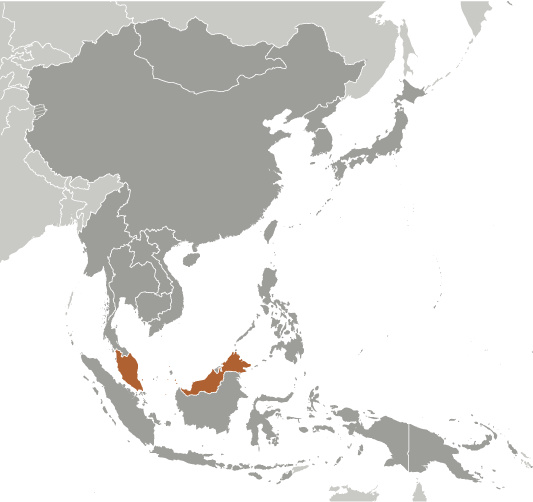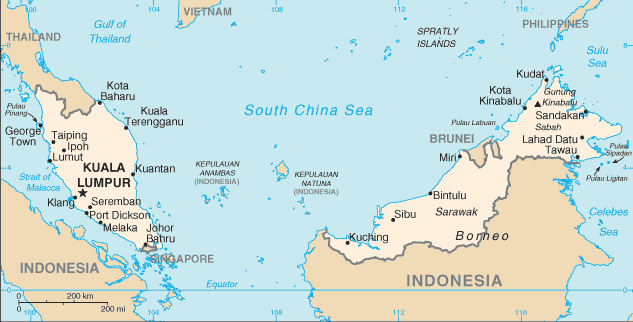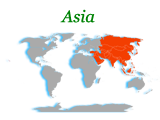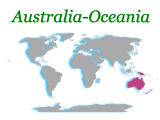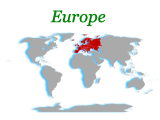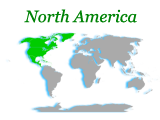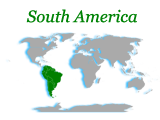During the late 18th and 19th centuries, Great Britain established colonies and protectorates in the area of current Malaysia; these were occupied by Japan from 1942 to 1945. In 1948, the British-ruled territories on the Malay Peninsula formed the Federation of Malaya, which became independent in 1957. Malaysia was formed in 1963 when the former British colonies of Singapore and the East Malaysian states of Sabah and Sarawak on the northern coast of Borneo joined the Federation. The first several years of the country's history were marred by a Communist insurgency, Indonesian confrontation with Malaysia, Philippine claims to Sabah, and Singapore's secession from the Federation in 1965. During the 22-year term of Prime Minister MAHATHIR bin Mohamad (1981-2003), Malaysia was successful in diversifying its economy from dependence on exports of raw materials to expansion in manufacturing, services, and tourism.
Population
26,160,256 (July 2010 est.)
Country comparison to the world:46
Nationality
Noun:Malaysian(s)
Adjective:Malaysian
Ethnic groups
Malay 50.4%, Chinese 23.7%, indigenous 11%, Indian 7.1%, others 7.8% (2004 est.)
Religions
Muslim 60.4%, Buddhist 19.2%, Christian 9.1%, Hindu 6.3%, Confucianism, Taoism, other traditional Chinese religions 2.6%, other or unknown 1.5%, none 0.8% (2000 census)
Languages
Bahasa Malaysia (official), English, Chinese (Cantonese, Mandarin, Hokkien, Hakka, Hainan, Foochow), Tamil, Telugu, Malayalam, Panjabi, Thai
note: in East Malaysia there are several indigenous languages; most widely spoken are Iban and Kadazan
Country Name
Conventional long form:none
Conventional short form:Malaysia
Local long form:none
Local short form:Malaysia
Former:Federation of Malaya
Government Type
constitutional monarchy
note: nominally headed by paramount ruler (commonly referred to as the King) and a bicameral Parliament consisting of a nonelected upper house and an elected lower house; all Peninsular Malaysian states have hereditary rulers (commonly referred to as sultans) except Melaka and Pulau Pinang (Penang); those two states along with Sabah and Sarawak in East Malaysia have governors appointed by government; powers of state governments are limited by federal constitution; under terms of federation, Sabah and Sarawak retain certain constitutional prerogatives (e.g., right to maintain their own immigration controls)
Capital
Name:Kuala Lumpur
Geographic coordinates:3 10 N, 101 42 E
Time difference:UTC+8 (13 hours ahead of Washington, DC during Standard Time)
note: Putrajaya is referred to as administrative center not capital; Parliament meets in Kuala Lumpur
Administrative divisions
13 states (negeri-negeri, singular - negeri) Johor, Kedah, Kelantan, Melaka, Negeri Sembilan, Pahang, Perak, Perlis, Pulau Pinang, Sabah, Sarawak, Selangor, and Terengganu; and 1 federal territory (Wilayah Persekutuan) with three components, city of Kuala Lumpur, Labuan, and Putrajaya
Independence
31 August 1957 (from the UK)
National Holiday
Independence Day/Malaysia Day, 31 August (1957)
Constitution
31 August 1957; amended many times the latest in 2007
Legal system
based on English common law; judicial review of legislative acts in the Supreme Court at request of supreme head of the federation; Islamic law is applied to Muslims in matters of family law and religion; has not accepted compulsory ICJ jurisdiction
Suffrage
21 years of age; universal
Executive branch
Chief of state: King - Sultan MIZAN Zainal Abidin (since 13 December 2006); (the position of the king is primarily ceremonial)
Head of government:Prime Minister Mohamed NAJIB bin Abdul Razak (since 3 April 2009); Deputy Prime Minister MUHYIDDIN bin Mohamed Yassin (since 9 April 2009)
Cabinet:Cabinet appointed by the prime minister from among the members of Parliament with consent of the king
(For more information visit the World Leaders website)
Elections:kings elected by and from the hereditary rulers of nine of the states for five-year terms; selection based on principle of rotation among rulers of states; election last held on 3 November 2006 (next to be held in 2011); prime minister designated from among the members of the House of Representatives; following legislative elections, the leader who commands the support of the majority of members in the House becomes prime minister (since independence this has been the leader of the UMNO party)
Election results:Sultan MIZAN Zainal Abidin elected king
Legislative branch
bicameral Parliament or Parlimen consists of Senate or Dewan Negara (70 seats; 44 members appointed by the king, 26 elected by 13 state legislatures to serve three-year terms with a two term limit) and House of Representatives or Dewan Rakyat (222 seats; members elected by popular vote to serve up to five-year terms)
Elections: House of Representatives - last held on 8 March 2008 (next to be held by June 2013)
Election results:House of Representatives - percent of vote - BN coalition 50.3%, opposition parties 46.8%, others 2.9%; seats - BN coalition 140, opposition parties 82
Judicial branch
civil courts include Federal Court, Court of Appeal, High Court of Malaya on peninsula Malaysia, and High Court of Sabah and Sarawak in states of Borneo (judges are appointed by the king on the advice of the prime minister); sharia courts include Sharia Appeal Court, Sharia High Court, and Sharia Subordinate Courts at state-level and deal with religious and family matters such as custody, divorce, and inheritance only for Muslims; decisions of sharia courts cannot be appealed to civil courts
Political Parties and Leaders
National Front (Barisan Nasional) or BN (ruling coalition) consists of the following parties: Gerakan Rakyat Malaysia Party or PGRM [KOH Tsu Koon]; Liberal Democratic Party (Parti Liberal Demokratik - Sabah) or LDP [LIEW Vui Keong]; Malaysian Chinese Association (Persatuan China Malaysia) or MCA [CHUA Soi Lek]; Malaysian Indian Congress (Kongres India Malaysia) or MIC [S. Samy VELLU]; Parti Bersatu Rakyat Sabah or PBRS [Joseph KURUP]; Parti Bersatu Sabah or PBS [Joseph PAIRIN Kitingan]; Parti Pesaka Bumiputera Bersatu or PBB [Abdul TAIB Mahmud]; Parti Rakyat Sarawak or PRS [James MASING]; Sarawak United People's Party (Parti Bersatu Rakyat Sarawak) or SUPP [George CHAN Hong Nam]; United Malays National Organization or UMNO [NAJIB bin Abdul Razak]; United Pasokmomogun Kadazandusun Murut Organization (Pertubuhan Pasko Momogun Kadazan Dusun Bersatu) or UPKO [Bernard DOMPOK]; People's Progressive Party (Parti Progresif Penduduk Malaysia) or PPP [M.Kayveas]; Sarawak Progressive Democratic Party or SPDP [William MAWAN])
People's Alliance (Pakatan Rakyat) or PR (opposition coalition) consists of the following parties: Democratic Action Party (Parti Tindakan Demokratik) or DAP [KARPAL Singh]; Islamic Party of Malaysia (Parti Islam se Malaysia) or PAS [Abdul HADI Awang]; People's Justice Party (Parti Keadilan Rakyat) or PKR [WAN AZIZAH Wan Ismail]; Sarawak National Party or SNAP [Edwin DUNDANG]
independent party: Sabah Progressive Party (Parti Progresif Saban) or SAPP [YONG Teck Lee]
Political pressure groups and leaders
Bar Council BERSIH (electoral reform coalition); PEMBELA (Muslim NGO coalition)
Other:religious groups; women's groups; youth groups
International organization participation
ADB, APEC, APT, ARF, ASEAN, BIS, C, CICA (observer), CP, D-8, EAS, FAO, G-15, G-77, IAEA, IBRD, ICAO, ICC, ICRM, IDA, IDB, IFAD, IFC, IFRCS, IHO, ILO, IMF, IMO, IMSO, Interpol, IOC, IPU, ISO, ITSO, ITU, ITUC, MIGA, MINURSO, MONUC, NAM, OIC, OPCW, PCA, PIF (partner), UN, UNAMID, UNCTAD, UNESCO, UNIDO, UNIFIL, UNMIL, UNMIS, UNMIT, UNWTO, UPU, WCO, WFTU, WHO, WIPO, WMO, WTO
Diplomatic representation in the US
Chief of mission:Ambassador JAMALUDDIN Jarjis
Chancery:3516 International Court NW, Washington, DC 20008
Telephone:[1] (202) 572-9700
FAX:[1] (202) 572-9882
Consulate(s) general:Los Angeles, New York
Diplomatic representation from the US
Chief of mission:Ambassador (vacant); Charge d'Affaires Robert G. RAPSON
Embassy:376 Jalan Tun Razak, 50400 Kuala Lumpur
Mailing address:US Embassy Kuala Lumpur, APO AP 96535-8152
Telephone:[60] (3) 2168-5000
FAX:[60] (3) 2142-2207
Flag description
14 equal horizontal stripes of red (top) alternating with white (bottom); there is a blue rectangle in the upper hoist-side corner bearing a yellow crescent and a yellow 14-pointed star; the crescent and the star are traditional symbols of Islam
note: the design is based on the flag of the US

